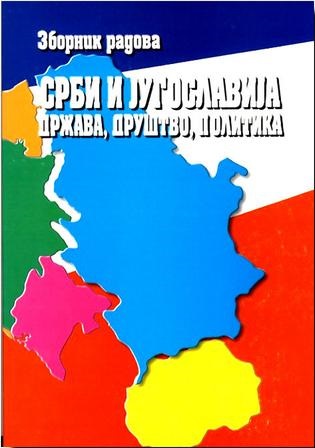Гимназије у Србији за време Краљевине СХС
High-Schools in Serbia in the Kingdom of the Serbs, Croats and Slovenes
Author(s): Dušan Bajagić
Subject(s): Social history, School education, History of Education, State/Government and Education, Interwar Period (1920 - 1939), Sociology of Education
Published by: Institut za noviju istoriju Srbije
Keywords: Kingdom of SHS; Serbia; education; high-school;
Summary/Abstract: A high-school in Serbia in the 1921/22 school-year had on the average 11 classes, 20 teachers and 510 students. It was in charge of a territory comprising 1,518.5 km2, with 11,998.3 households, i.e. of 65,549.8 inhabitants. There were 1,079.8 households and 5,899.5 inhabitants to a class. The only administrative units surpassing the average number of households and inhabitants to a class were the City of Belgrade with 185 households and 745 inhabitants, the Kragujevac District with 567 households and 2,960 inhabitants, the Niš District with 705 households and 4,177 inhabitants, the Čačak District with 866 households and 4,514 inhabitants, the Skopje District with 864 households and 4,716 inhabitants, and the Morava District with 906 households and 4,841 inhabitants per class. Five years later, thanks to the spread of the high-school network, there was one high-school to 1,310 km2. Although it had on the average 12.3 classes, it now had “only” 17 teachers and 495 students on the average. The number of state-run high-schools which offered instruction in four grades, was increased during that five-year period from 53 to 64, i.e. by 11 or by 20.75%. The non-classical high-school became the general type of secondary school in Serbia and the whole Kingdom of the Serbs, Croats and Slovenes during 1920s. The basic feature of its network and structure was determined by the constant position of Belgrade as the educational center. Throughout that period it had a significant advantage in the structure of high-schools, as compared with other towns and districts. On the other hand, the structure of high-schools wasn’t unified enough in other districts. It was much better in districts with major urban centers. Kragujevac, Niš and Skopje are good examples. The share of private high-schools declined sharply in Serbia during the times of the Kingdom of the Serbs Croats and Slovenes as compared with the pre-war times. However, their existence contributed considerably to the balance of the network and the structure of high-schools in certain districts. Although the development of the network and the structure of highschools was faster in Southern than in Northern Serbia, it wasn’t fast enough to do away with the obvious differences between the two regions. Furthermore, an unequal development of high-schools in South Serbia itself was also very much in evidence, producing significant differences among districts there, some of which remained with no high-schools throughout that period. This was particularly true of the those in the territory of Old Serbia.
Book: Срби и Југославија. Држава, друштво, политика
- Page Range: 313-326
- Page Count: 14
- Publication Year: 2007
- Language: Serbian
- Content File-PDF

